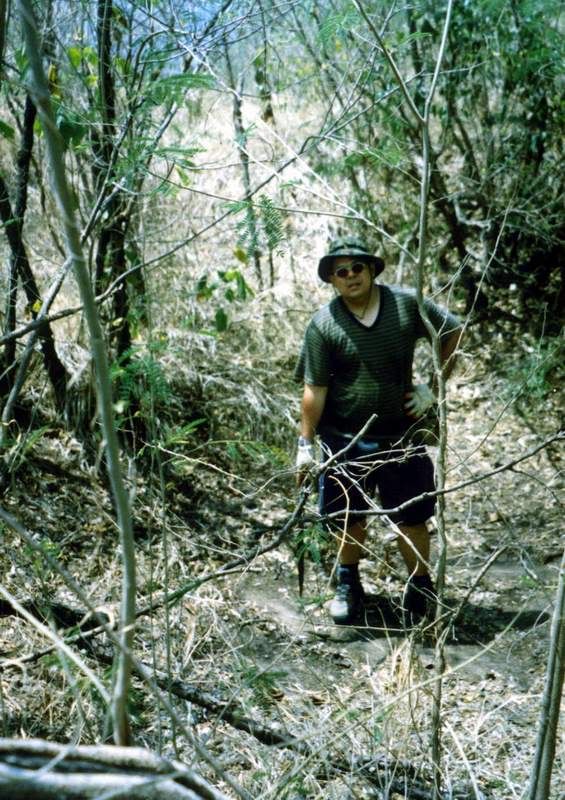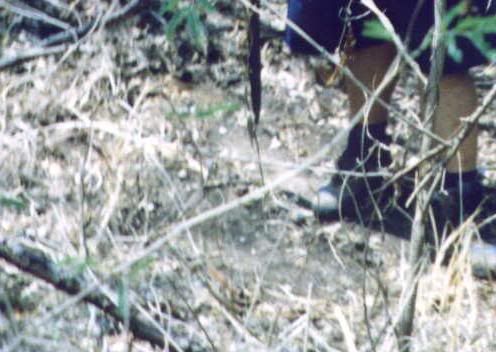Post by fots2 on May 14, 2011 15:09:39 GMT 8
This battery is rarely mentioned so I thought I would give you a little tour of this area.
During the summer and fall of 1940, in order to increase the efficiency of 155-mm guns for firing at Naval targets, funds were secured and work started by the Engineers on the construction of Battery Sunset. This included 4 Panama mounts, 400 feet of road, 1 cut and cover magazine, a temporary galvanized iron observation station and 1 galvanized iron tool house. (from The Moore Report Engineer Annex)
Battery Sunset, located on a ridge between Batteries Smith and Hanna, was to be manned by D-91st Coast Artillery, Philippine Scouts.
For those who are not familiar with this type of mount or gun, here is some background information for you. (from various sources including Wikipedia)
Panama Mounts
The term Panama Mount describes a gun mount developed by the U.S. Army in Panama during the 1920s for fixed coastal artillery positions. Panama mounts were widely used during the build-up to and during World War II by the United States military.
The mounts could be constructed as either full, 3/4 or half circles of steel rail set in concrete with a diameter of approximately 36 feet. A concrete column with a diameter of ten feet was constructed in the center of the circle to support the gun and carriage. The concrete column was connected to the outer concrete ring by concrete beams for alignment/stability. Originally traverse was accomplished with several men and pry bars to move the trailing arms around the steel ring. Later installations included a geared steel ring just inside of the outer steel rail for improved traverse.

1942 Panama Mount Plans
155mm GPF Gun
The gun was designed during World War I by Colonel L.J.F. Filloux to meet France's urgent need for modern heavy artillery, and became the standard heavy field gun of the French Army from 1917 until World War II. The rate of fire was 2rpm, range was 17,000 yards.
Canon de 155mm GPF, designated 155mm (6.1 inch) guns were often married with Panama mounts. It was termed "Grande Puissance Filloux" (GPF), for "Great Power" and the name of the designer, Filloux.
It was also manufactured in the USA starting in 1917 after the US switched to metric artillery. It was based on French patterns. The United States Army and United States Marine Corps used this gun as their primary heavy artillery gun under the designation 155 mm Gun M1917 or M1918.
The M1918MI was the American-made gun, which differed in some respects, especially the breech and firing mechanism.
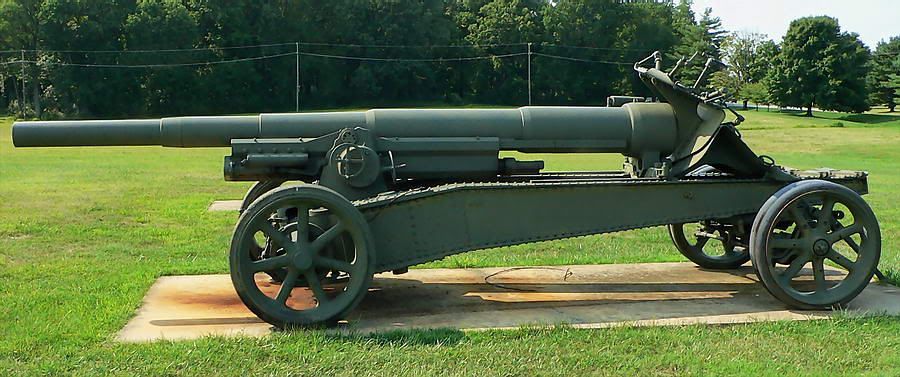
155mm GPF gun ready for transport.
Today Battery Sunset is one dense and thorny place to get to. The short road is virtually impassable. Fortunately it is not too far from Grubbs Trail and you are there in a few minutes. The magazine and Panama mounts are basically in a straight line along the ridge parallel to the trail.
The first structure you come to is the underground magazine. A concrete walled walkway heads straight into the ridge and then makes a 90 degree left turn into the magazine. It has a domed roof and two air vents at the rear.
The floor is littered with broken bottles and metal cans. One hotel employee who knows about this place says it is full of bottles but they are all broken (translation: the bottles are broken, I can't sell them!). That is good as most people consider this nothing but garbage. To folks like us it is pure history telling a story.
Dozens of beer and Saki bottles are broken off at the necks. Caps are still on the necks strewn randomly on the floor. This was what Phantom refers to as a Banzai Party spot. Bottle tops were smashed and then the Japs drank the contents. Apparently they didn't worry about glass fragments knowing they would be all dead in the next hour or so.
I can imagine drunken soldiers leaving here and joining others for their night attack on 503d troopers dug in not so far away on Battery Hearn. Troopers said they could smell alcohol coming from the enemy. Also on the floor are many small metal cans that I assume contained food.
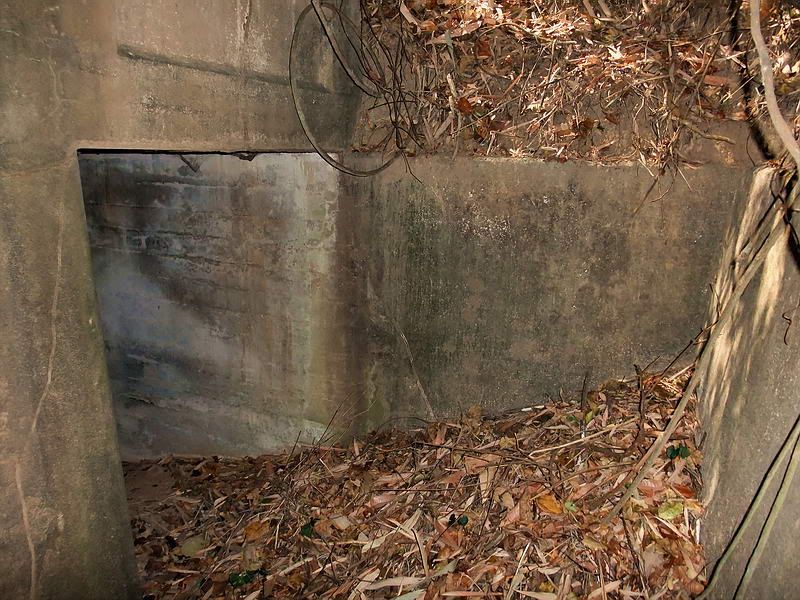
Coming down the walled walkway you can see the magazine entrance to the left.
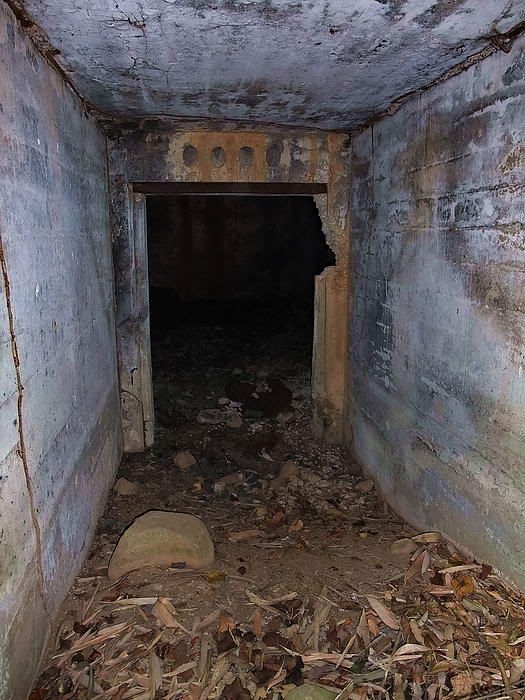
Doorway to the magazine.
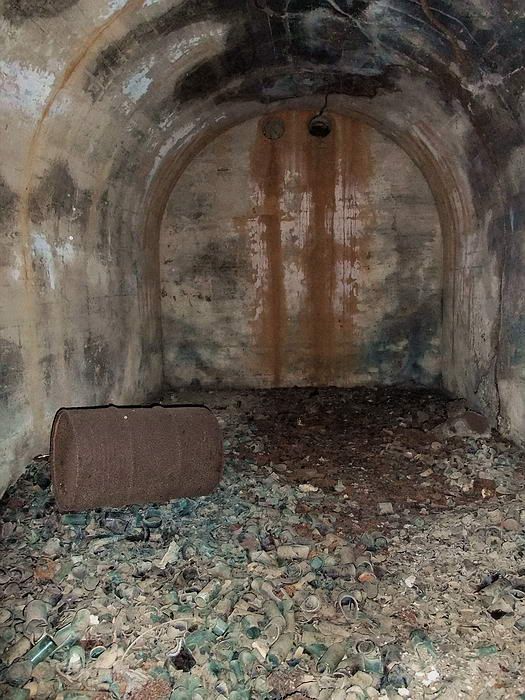
Looking into the magazine.
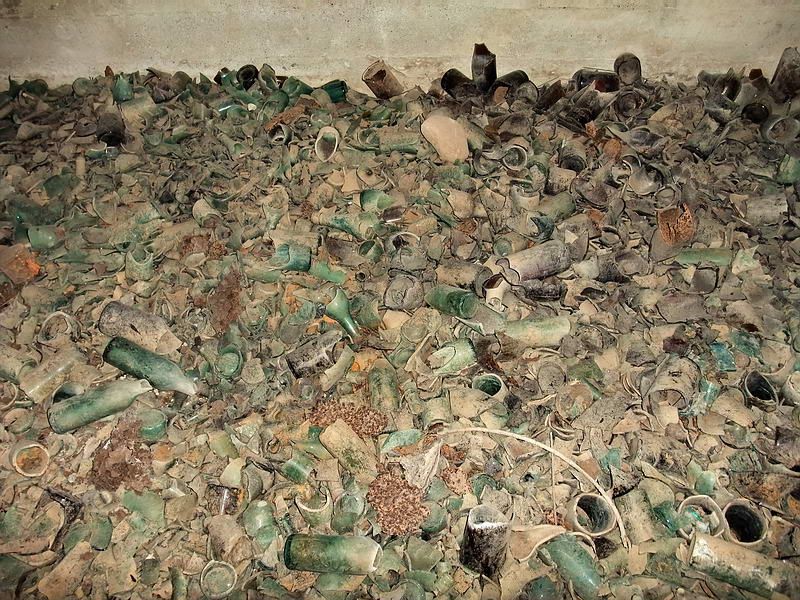
Broken bottles are everywhere.
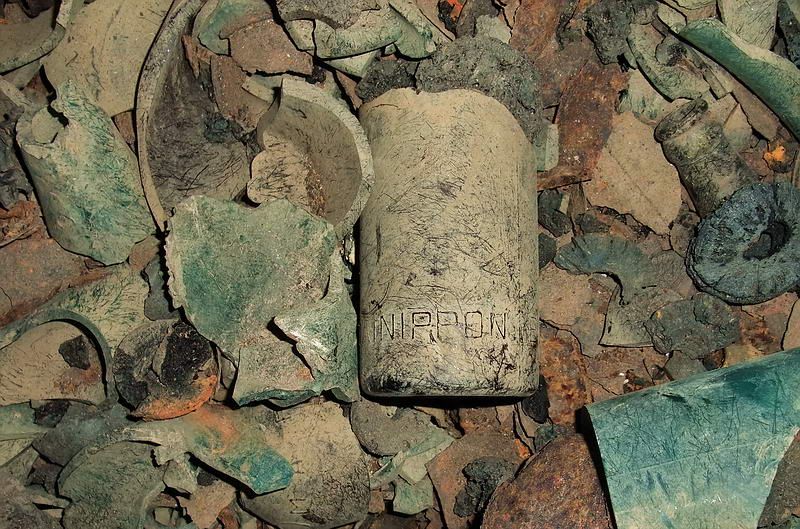
Dia Nippon Brewing Company Limited.
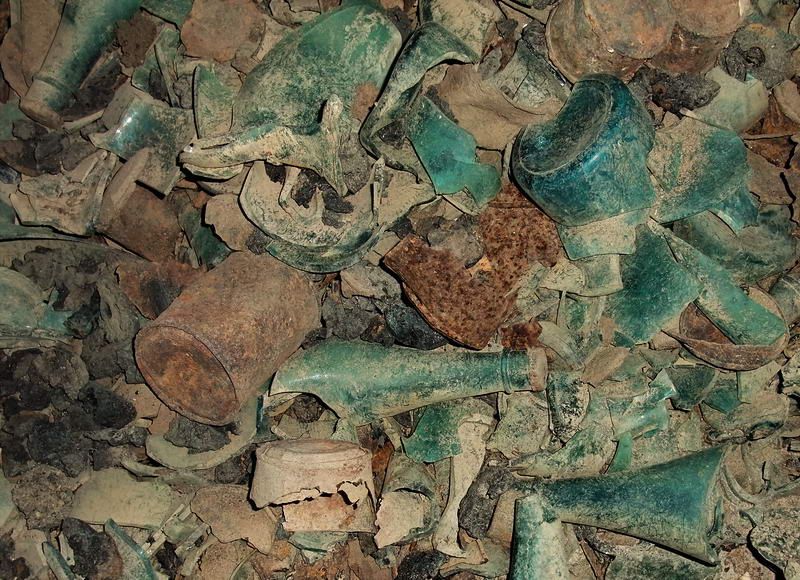
Most bottles still have the cap on the necks.
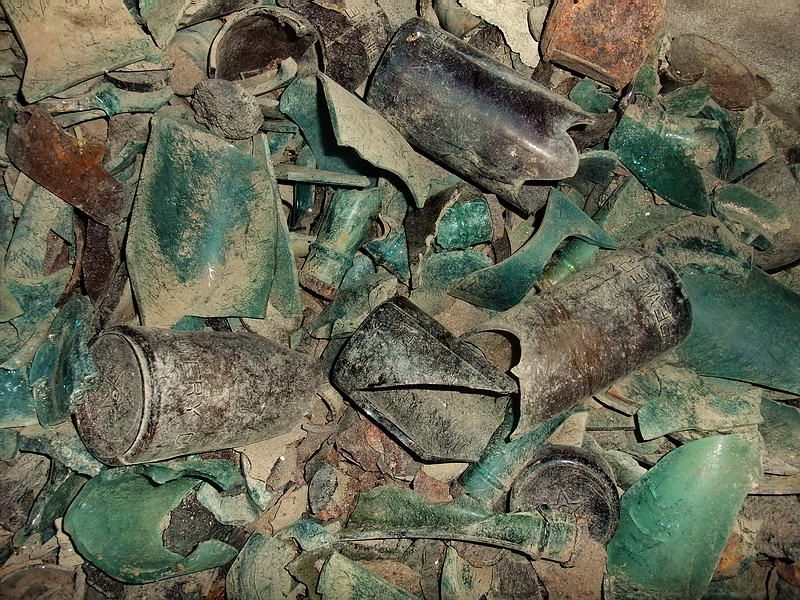
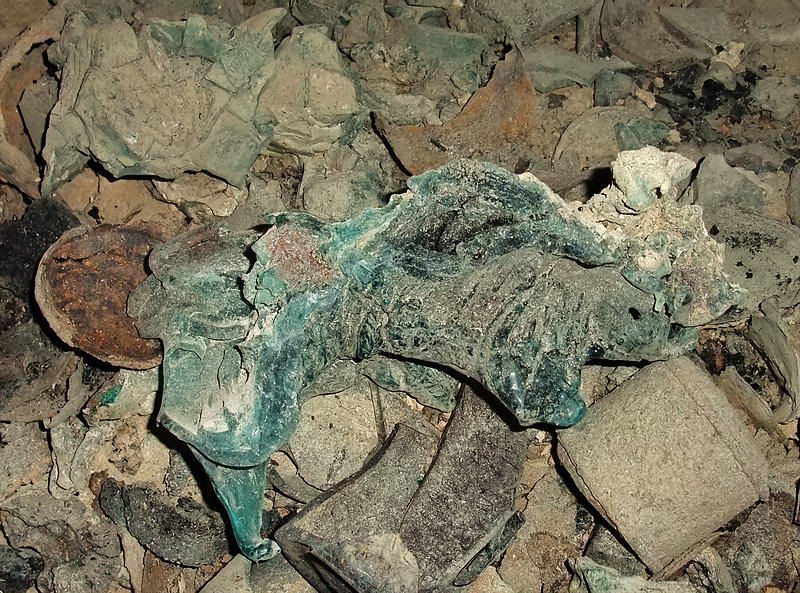
There are signs of a fire in here including these melted glass bottles.
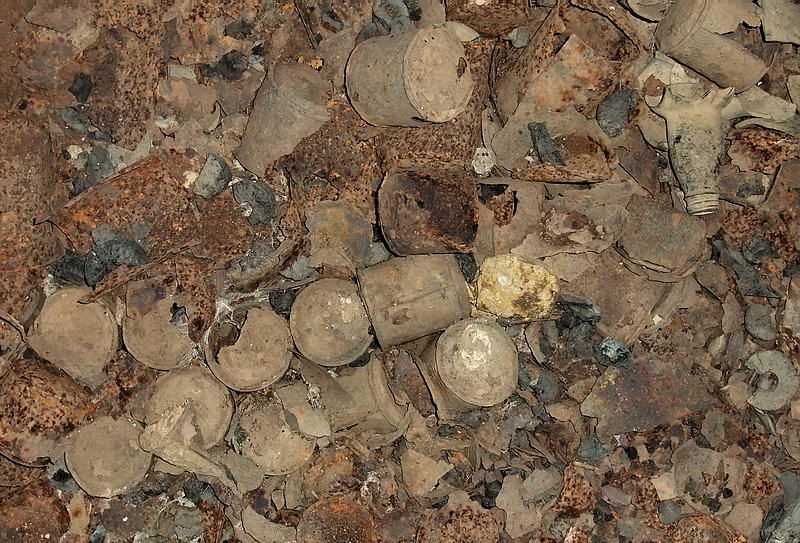
Metal cans, most unopened. There is no lettering visible to identify what the contents may have been.
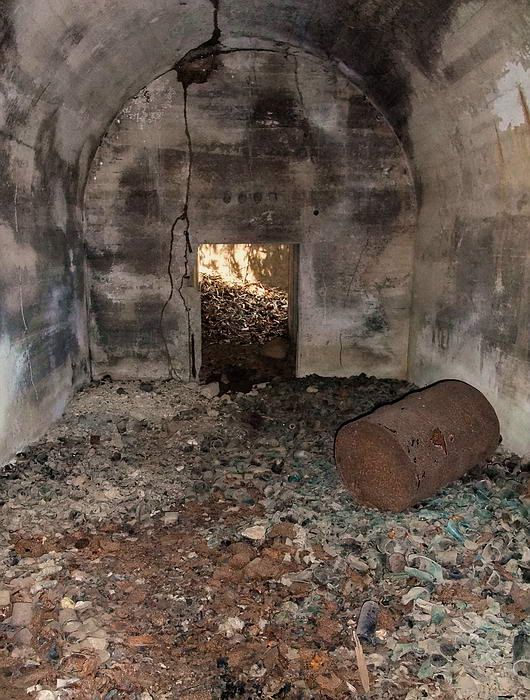
Looking towards the entrance of the magazine.
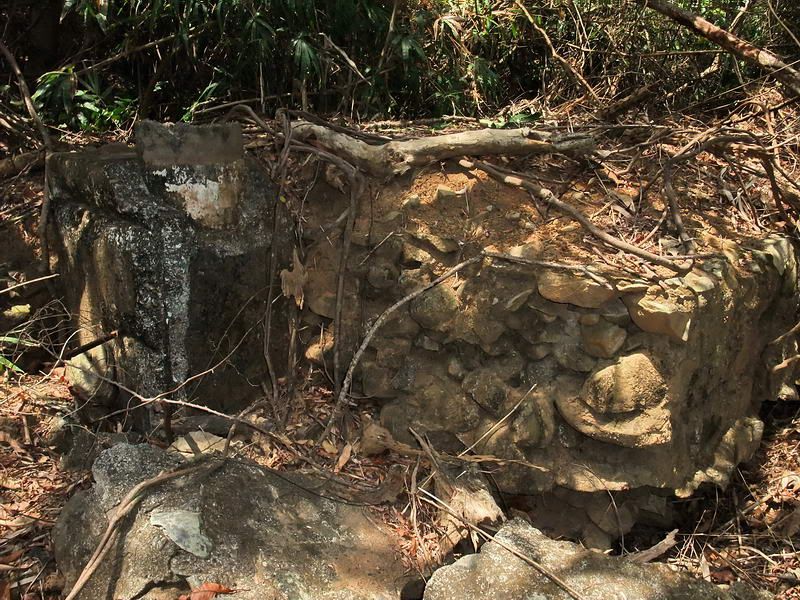
Up on top, the magazine's roof has been reinforced with rocks and concrete.
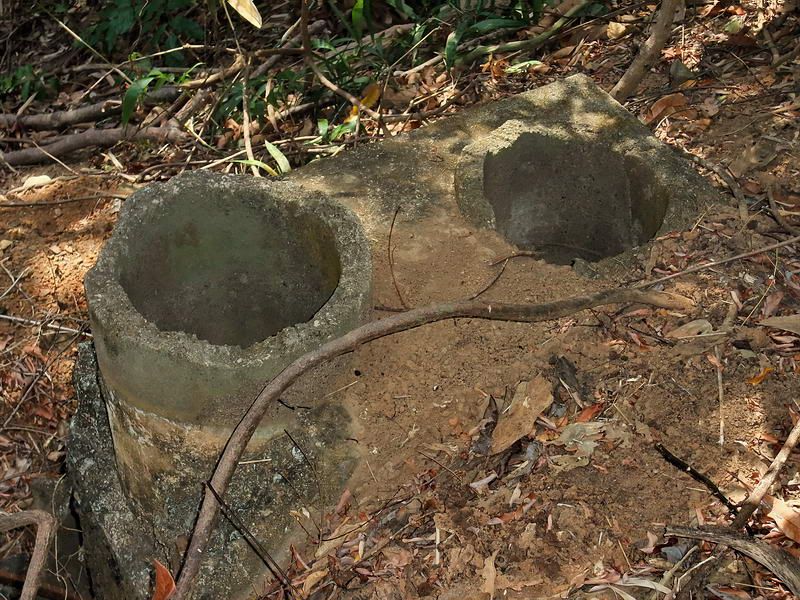
The magazine air vents reach the surface here.
Two of the Panama mounts look quite destroyed and chunks of concrete lie around the large circular pits. Two others are intact but have quite a bit of soil and trees covering them now. The center ring of one mount looks like I expect it to. The outer ring is buried though.
The second intact Panama Mount, also partially covered, is constructed like no other I have seen on Corregidor. At first I thought there was a concrete wall close to the gun mount but after clearing some bushes away I see it is connected. Although one side of the mount is buried, this appears to be a half or 180 degree Panama Mount. The only other partial Panama Mount that I am aware of on Corregidor was for Battery Monja Gun #2.
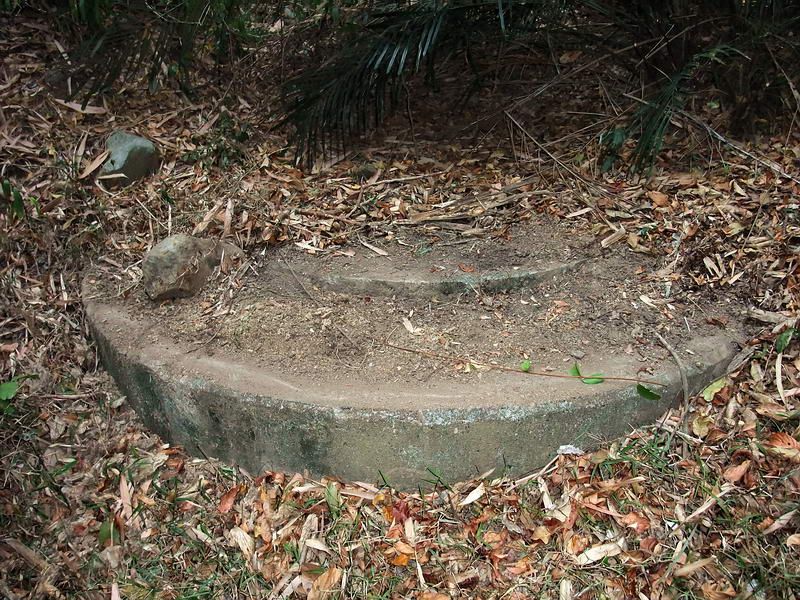
Center rings of a Panama Mount. The outer ring with the embedded rail is buried.

Center rings of the second intact Panama Mount.
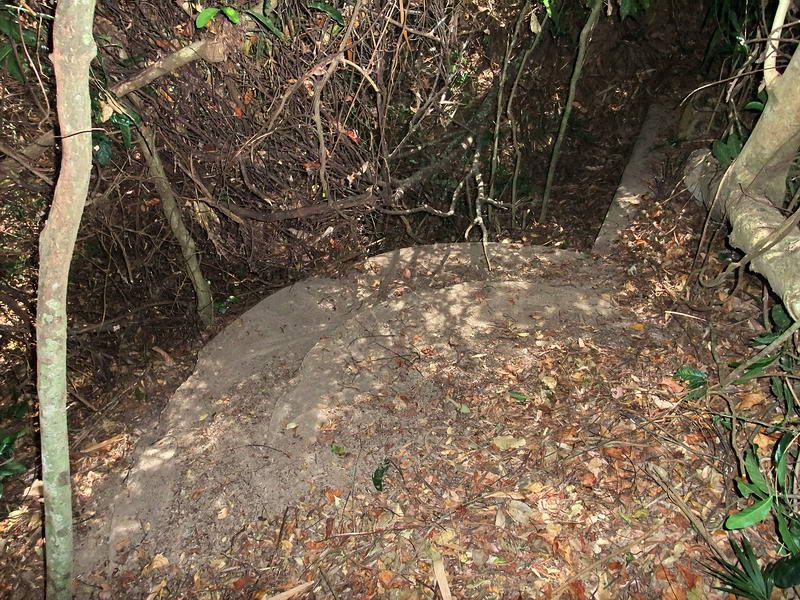
Note the concrete wall attached to the center rings.
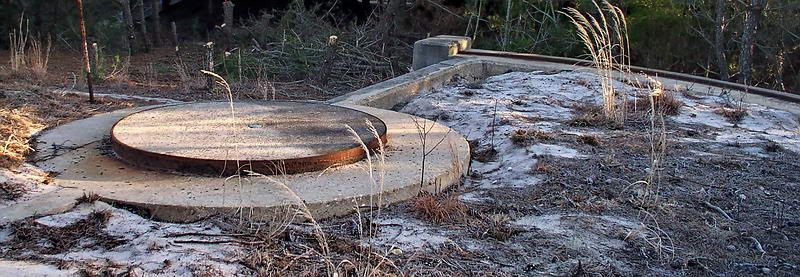
For comparison, here is a half (180 degree) Panama Mount located in the U.S.
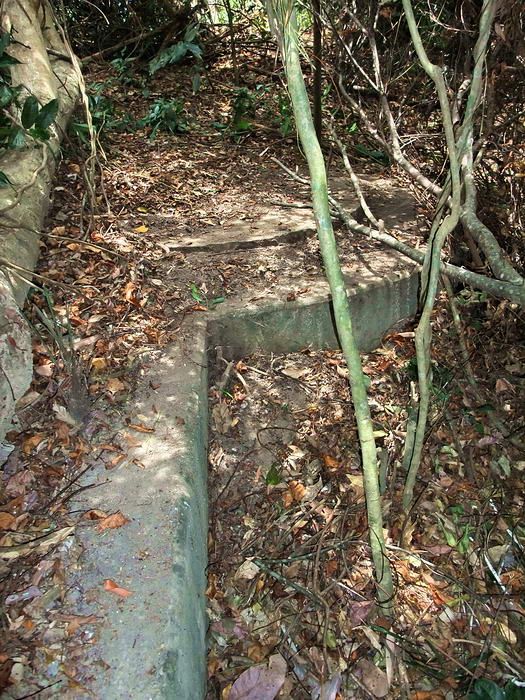
This appears to look like a half Panama Mount also. The rest of it is buried so it is difficult to determine for sure.
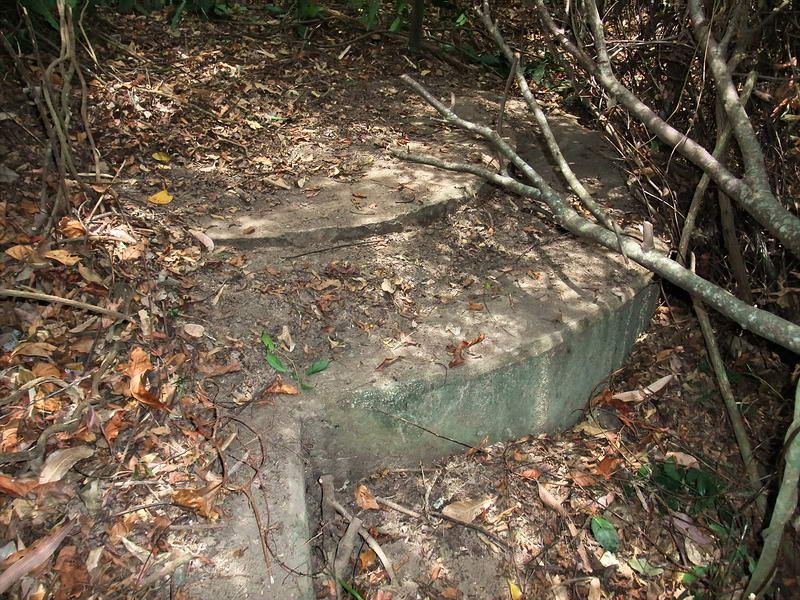
Close-up of the center section of the Panama Mount.
Vegetation is so thick and thorny in places that I gave up for that day anyway. Perhaps I will try again since I did not find the observation station or the tool house that were also constructed. I wonder if the galvanized construction that was used means that nothing would remain today other than some short concrete pedestals. They may be buried like most of the mounts. This battery is not on any maps so no help there.
I will add to this report if anything else turns up.
During the summer and fall of 1940, in order to increase the efficiency of 155-mm guns for firing at Naval targets, funds were secured and work started by the Engineers on the construction of Battery Sunset. This included 4 Panama mounts, 400 feet of road, 1 cut and cover magazine, a temporary galvanized iron observation station and 1 galvanized iron tool house. (from The Moore Report Engineer Annex)
Battery Sunset, located on a ridge between Batteries Smith and Hanna, was to be manned by D-91st Coast Artillery, Philippine Scouts.
For those who are not familiar with this type of mount or gun, here is some background information for you. (from various sources including Wikipedia)
Panama Mounts
The term Panama Mount describes a gun mount developed by the U.S. Army in Panama during the 1920s for fixed coastal artillery positions. Panama mounts were widely used during the build-up to and during World War II by the United States military.
The mounts could be constructed as either full, 3/4 or half circles of steel rail set in concrete with a diameter of approximately 36 feet. A concrete column with a diameter of ten feet was constructed in the center of the circle to support the gun and carriage. The concrete column was connected to the outer concrete ring by concrete beams for alignment/stability. Originally traverse was accomplished with several men and pry bars to move the trailing arms around the steel ring. Later installations included a geared steel ring just inside of the outer steel rail for improved traverse.

1942 Panama Mount Plans
155mm GPF Gun
The gun was designed during World War I by Colonel L.J.F. Filloux to meet France's urgent need for modern heavy artillery, and became the standard heavy field gun of the French Army from 1917 until World War II. The rate of fire was 2rpm, range was 17,000 yards.
Canon de 155mm GPF, designated 155mm (6.1 inch) guns were often married with Panama mounts. It was termed "Grande Puissance Filloux" (GPF), for "Great Power" and the name of the designer, Filloux.
It was also manufactured in the USA starting in 1917 after the US switched to metric artillery. It was based on French patterns. The United States Army and United States Marine Corps used this gun as their primary heavy artillery gun under the designation 155 mm Gun M1917 or M1918.
The M1918MI was the American-made gun, which differed in some respects, especially the breech and firing mechanism.

155mm GPF gun ready for transport.
Today Battery Sunset is one dense and thorny place to get to. The short road is virtually impassable. Fortunately it is not too far from Grubbs Trail and you are there in a few minutes. The magazine and Panama mounts are basically in a straight line along the ridge parallel to the trail.
The first structure you come to is the underground magazine. A concrete walled walkway heads straight into the ridge and then makes a 90 degree left turn into the magazine. It has a domed roof and two air vents at the rear.
The floor is littered with broken bottles and metal cans. One hotel employee who knows about this place says it is full of bottles but they are all broken (translation: the bottles are broken, I can't sell them!). That is good as most people consider this nothing but garbage. To folks like us it is pure history telling a story.
Dozens of beer and Saki bottles are broken off at the necks. Caps are still on the necks strewn randomly on the floor. This was what Phantom refers to as a Banzai Party spot. Bottle tops were smashed and then the Japs drank the contents. Apparently they didn't worry about glass fragments knowing they would be all dead in the next hour or so.
I can imagine drunken soldiers leaving here and joining others for their night attack on 503d troopers dug in not so far away on Battery Hearn. Troopers said they could smell alcohol coming from the enemy. Also on the floor are many small metal cans that I assume contained food.

Coming down the walled walkway you can see the magazine entrance to the left.

Doorway to the magazine.

Looking into the magazine.

Broken bottles are everywhere.

Dia Nippon Brewing Company Limited.

Most bottles still have the cap on the necks.


There are signs of a fire in here including these melted glass bottles.

Metal cans, most unopened. There is no lettering visible to identify what the contents may have been.

Looking towards the entrance of the magazine.

Up on top, the magazine's roof has been reinforced with rocks and concrete.

The magazine air vents reach the surface here.
Two of the Panama mounts look quite destroyed and chunks of concrete lie around the large circular pits. Two others are intact but have quite a bit of soil and trees covering them now. The center ring of one mount looks like I expect it to. The outer ring is buried though.
The second intact Panama Mount, also partially covered, is constructed like no other I have seen on Corregidor. At first I thought there was a concrete wall close to the gun mount but after clearing some bushes away I see it is connected. Although one side of the mount is buried, this appears to be a half or 180 degree Panama Mount. The only other partial Panama Mount that I am aware of on Corregidor was for Battery Monja Gun #2.

Center rings of a Panama Mount. The outer ring with the embedded rail is buried.

Center rings of the second intact Panama Mount.

Note the concrete wall attached to the center rings.

For comparison, here is a half (180 degree) Panama Mount located in the U.S.

This appears to look like a half Panama Mount also. The rest of it is buried so it is difficult to determine for sure.

Close-up of the center section of the Panama Mount.
Vegetation is so thick and thorny in places that I gave up for that day anyway. Perhaps I will try again since I did not find the observation station or the tool house that were also constructed. I wonder if the galvanized construction that was used means that nothing would remain today other than some short concrete pedestals. They may be buried like most of the mounts. This battery is not on any maps so no help there.
I will add to this report if anything else turns up.







